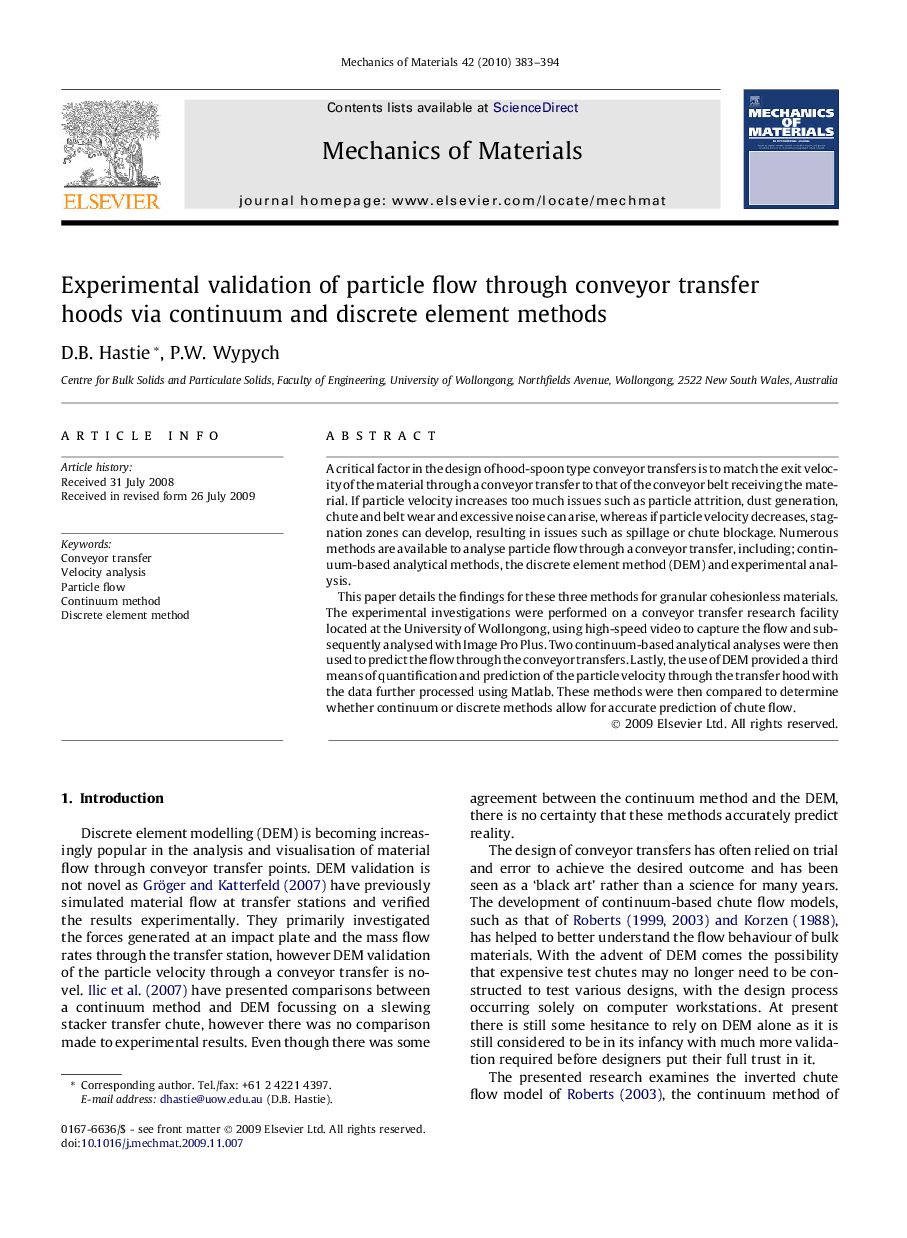| کد مقاله | کد نشریه | سال انتشار | مقاله انگلیسی | نسخه تمام متن |
|---|---|---|---|---|
| 800488 | 1467518 | 2010 | 12 صفحه PDF | دانلود رایگان |

A critical factor in the design of hood-spoon type conveyor transfers is to match the exit velocity of the material through a conveyor transfer to that of the conveyor belt receiving the material. If particle velocity increases too much issues such as particle attrition, dust generation, chute and belt wear and excessive noise can arise, whereas if particle velocity decreases, stagnation zones can develop, resulting in issues such as spillage or chute blockage. Numerous methods are available to analyse particle flow through a conveyor transfer, including; continuum-based analytical methods, the discrete element method (DEM) and experimental analysis.This paper details the findings for these three methods for granular cohesionless materials. The experimental investigations were performed on a conveyor transfer research facility located at the University of Wollongong, using high-speed video to capture the flow and subsequently analysed with Image Pro Plus. Two continuum-based analytical analyses were then used to predict the flow through the conveyor transfers. Lastly, the use of DEM provided a third means of quantification and prediction of the particle velocity through the transfer hood with the data further processed using Matlab. These methods were then compared to determine whether continuum or discrete methods allow for accurate prediction of chute flow.
Journal: Mechanics of Materials - Volume 42, Issue 4, April 2010, Pages 383–394